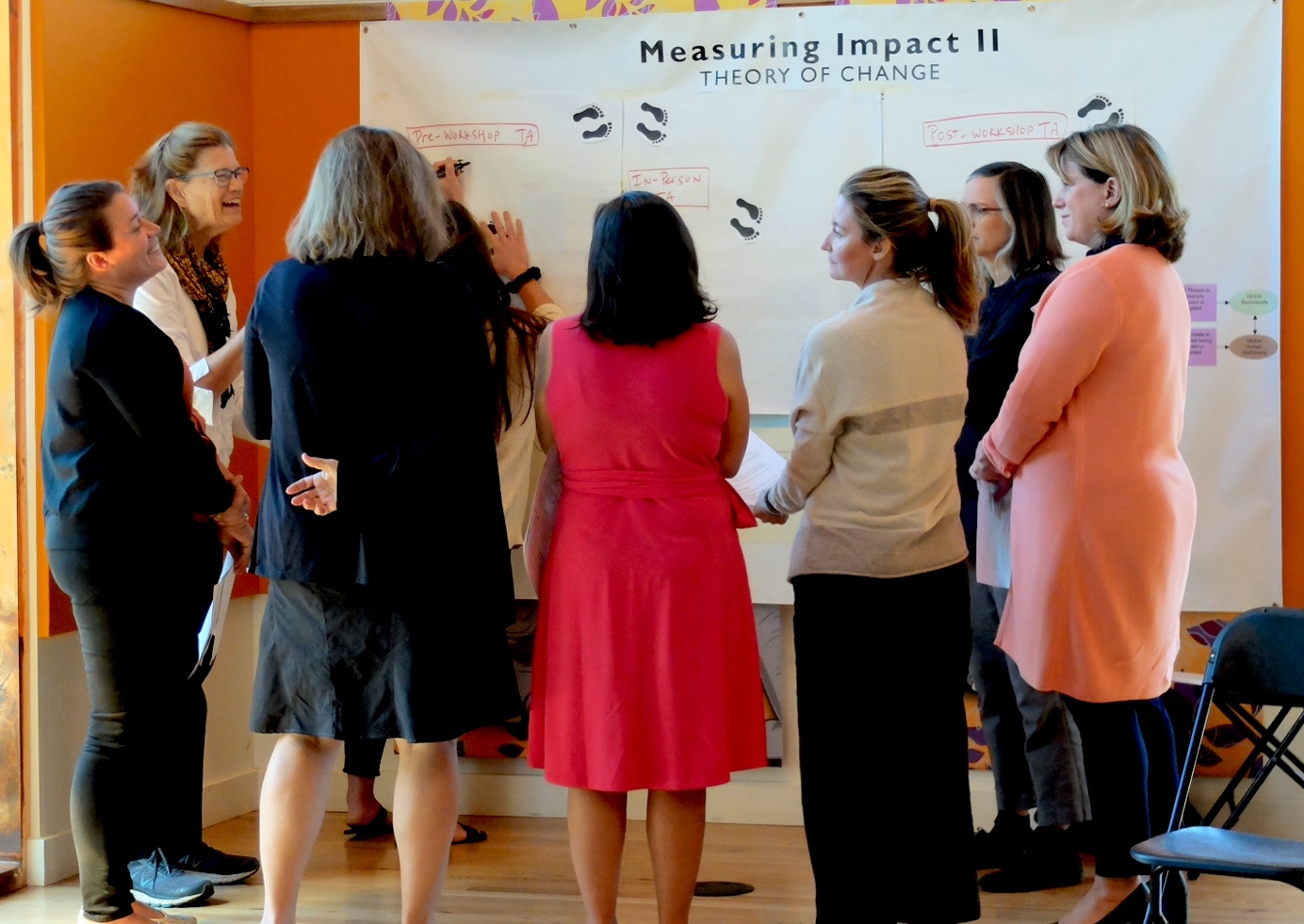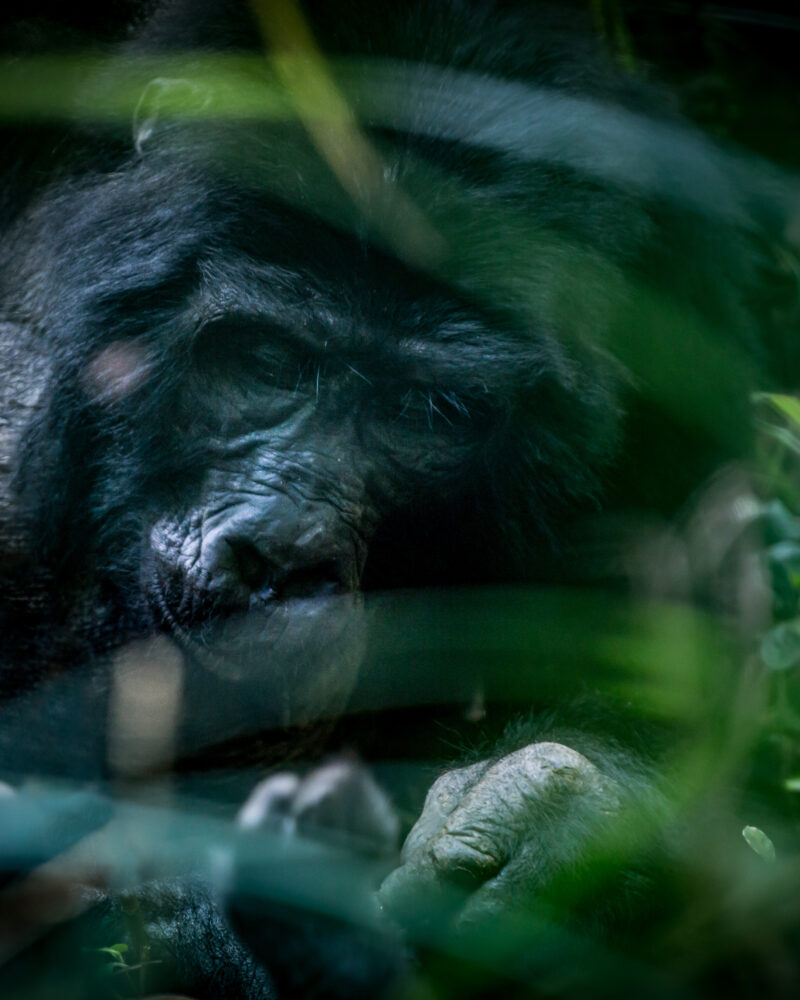This blog was originally published on USAID’s Learning Lab website.
From supporting democratic processes to preventing wildlife trafficking and adapting to a changing climate, addressing any challenge starts with someone thinking (explicitly or implicitly) “If we do this, then we will change that.” This construct is so institutionalized across programs, policies, and strategies in theories of change (ToC), that we sometimes risk seeing a ToC as another box to check. But ToCs are so much more than an “if/then” statement—when integrated into tools and processes, they provide a framework for designing activities, organizing evidence, facilitating collaboration, and much more. As living, adaptable frameworks there is always more to learn about how, when, and why to use a ToC.
In this blog, EI’s Kelsey Schueler and Perry Pockros sat down to discuss USAID’s new Theory of Change Fundamentals Training and how to balance the art and science of creating an impactful ToC.
Diving into the ToC Fundamentals Training
Kelsey Schueler: I was so excited to go through USAID’s new Theory of Change Fundamentals Training. ToCs are core to our work, so I’m encouraged to see the Agency investing in providing opportunities for continuous learning and skills building for both staff and partners. Perry, you had the unique view of seeing the course’s co-development by USAID’s Bureau for Planning, Learning, and Resource Management (PLR) in the Offices of Strategic and Program Planning (SPP) and Learning, Evaluation, and Research (LER). Through USAID’s Program Cycle Mechanism you oversaw the course storyboard design and visual development. With that in mind, what do you find to be exciting about this new course?
Perry Pockros: This training builds on a history of USAID investments in continuous learning around developing theories of change, for example Learning Lab has a terrific step-by-step workbook for facilitating a group to develop a theory of change. So, I’m most excited to see how this adds to USAID’s collective understanding of best practices. One of the drivers behind this new training was to articulate the Agency’s overall ToC framework informed by a local systems analysis and evidence gathering that applies throughout the Program Cycle. I think that framing of the context through local system perspectives as part of evidence gathering is a significant feature.
Kelsey: Absolutely! I love how this course emphasizes evidence and articulating assumptions. I’ve often seen separate problem/context analyses, but when you look at the five components of this training there is a clear link from context analysis to theory of change to monitoring, evaluation, and learning (MEL). I really like this structure to the course because it illustrates that theory of change is not a standalone process—we first need to understand how the system is currently operating and then we need to link our understanding of how change happens to actionable MEL frameworks that enable us to test assumptions and do adaptive management.
Perry: Agreed. And one of the course’s learning objectives demonstrates how TOC applies to all Agency staff roles and responsibilities.
Taking ToCs to the Next Level
Kelsey: The training is also a great reminder that ToCs are more than a requirement, they’re an opportunity for learning, collaboration, and adaptive management.
Perry: Right, in the course, we tried to build in much more context and complexity than a simple if/then statement. The module builds on the concept of leverage points, places within a complex system where a small change can have a large effect on a system’s structure, function, or behavior. At the same time, the course emphasizes the importance of programmatic and contextual assumptions—the causal connections, events, and conditions that need to be realized for the intervention to work. The course illustrates these concepts through a real USAID juvenile criminal reform activity case study that demonstrates the linkages among context, leverage points, interventions, outcomes, and assumptions. Building further, we want there to be a diverse set of lenses to really think through a problem’s root causes, stakeholders involved, and broader context. All of this and getting a group to collectively agree on causal relationships requires patience and commitment, something I think USAID’s resources set practitioners up to do, with practice.
Kelsey: I love thinking of a ToC as more than an if/then and broadening the ideas of when a ToC could be useful. Often, I see them having the most impact in projects when teams do not feel constrained by the ToC, but see it as a valuable tool through which to document decisions and process new information.
Perry: Exactly, and this is something the course highlights—ToCs are not static; they are meant to be used and revised as new evidence emerges or context changes. As you mentioned, that’s also true for when a team uses a ToC as part of a pause and reflect session.
Kelsey: There’s so much opportunity within the framework of a ToC. I’ve seen teams use their ToCs to onboard new staff and partners to the program’s vision and prevent siloing between teams. Sometimes teams will develop an overall ToC for their project and then individual ToCs for the implementation of different approaches or site-based activities at the sub-team level. Each group can use their ToC to guide implementation in their context, while also linking to the broader project theory to help everyone stay oriented and contribute to the overall purpose. In short, it’s like a really adaptable, specific yet connected compass.
Balancing the Art and Science
Kelsey: To wrap up, I’d love to hear how you see the balance between the art and science of ToCs play out.
Perry: I think supporting the development of this training is a clear example of that balancing act. The “science” comes into play in that we had a clear desired outcome—increasing development practitioners’ capacity to build and use ToCs—and evidence to support their understanding of how to get to that outcome—training approaches rooted in adult learning research. Then there’s the “art,” how do we make this adaptable to vastly different contexts? How do we make it visually engaging and effective? In other words, we had to create our own ToC for building this online training and used it as a guide to develop an intentional and hopefully impactful module.
Kelsey: To me, that’s the secret sauce of a good ToC, one that is both responsive to the variation in different contexts and rooted in a deep evidence base. I’m looking forward to adding this training to my toolbox and to helping other teams focus on how to take their theory of change to the next level.
Lead photo of Kelsey Schueler and other members of USAID’s Measuring Impact II team discussing the project’s theory of change.



